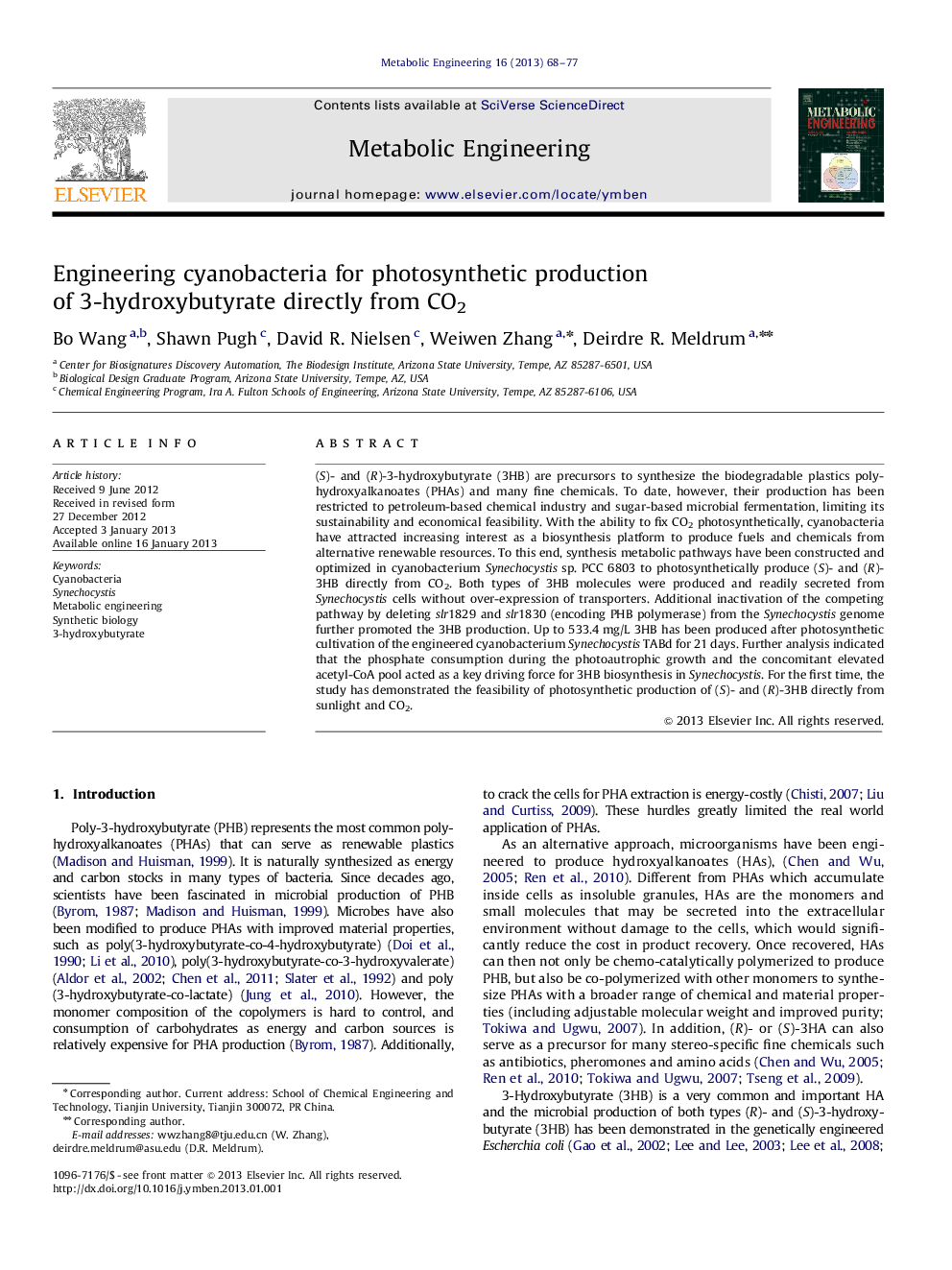| Article ID | Journal | Published Year | Pages | File Type |
|---|---|---|---|---|
| 31595 | Metabolic Engineering | 2013 | 10 Pages |
(S)- and (R)-3-hydroxybutyrate (3HB) are precursors to synthesize the biodegradable plastics polyhydroxyalkanoates (PHAs) and many fine chemicals. To date, however, their production has been restricted to petroleum-based chemical industry and sugar-based microbial fermentation, limiting its sustainability and economical feasibility. With the ability to fix CO2 photosynthetically, cyanobacteria have attracted increasing interest as a biosynthesis platform to produce fuels and chemicals from alternative renewable resources. To this end, synthesis metabolic pathways have been constructed and optimized in cyanobacterium Synechocystis sp. PCC 6803 to photosynthetically produce (S)- and (R)-3HB directly from CO2. Both types of 3HB molecules were produced and readily secreted from Synechocystis cells without over-expression of transporters. Additional inactivation of the competing pathway by deleting slr1829 and slr1830 (encoding PHB polymerase) from the Synechocystis genome further promoted the 3HB production. Up to 533.4 mg/L 3HB has been produced after photosynthetic cultivation of the engineered cyanobacterium Synechocystis TABd for 21 days. Further analysis indicated that the phosphate consumption during the photoautrophic growth and the concomitant elevated acetyl-CoA pool acted as a key driving force for 3HB biosynthesis in Synechocystis. For the first time, the study has demonstrated the feasibility of photosynthetic production of (S)- and (R)-3HB directly from sunlight and CO2.
► 3-hydroxybutyrate (3HB) biosynthetic pathways were introduced into cyanobacterium. ► 3HB was photosynthetically produced from bicarbonate and atmospheric CO2. ► 3HB was produced and secreted from the culture to over 500 mg/L by cyanobacteria. ► Phosphate consumption elevated acetyl-CoA pool for 3HB biosynthesis.
